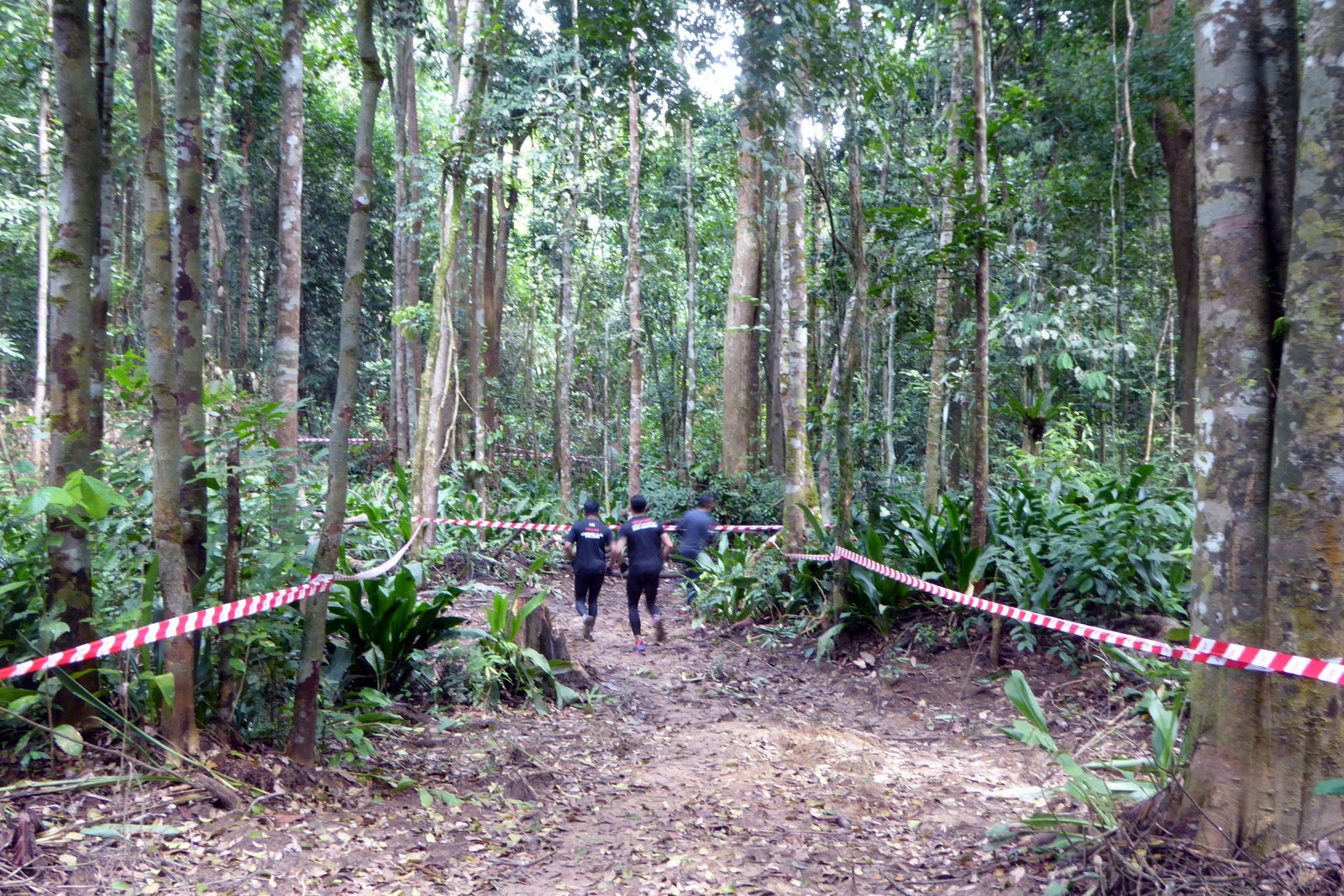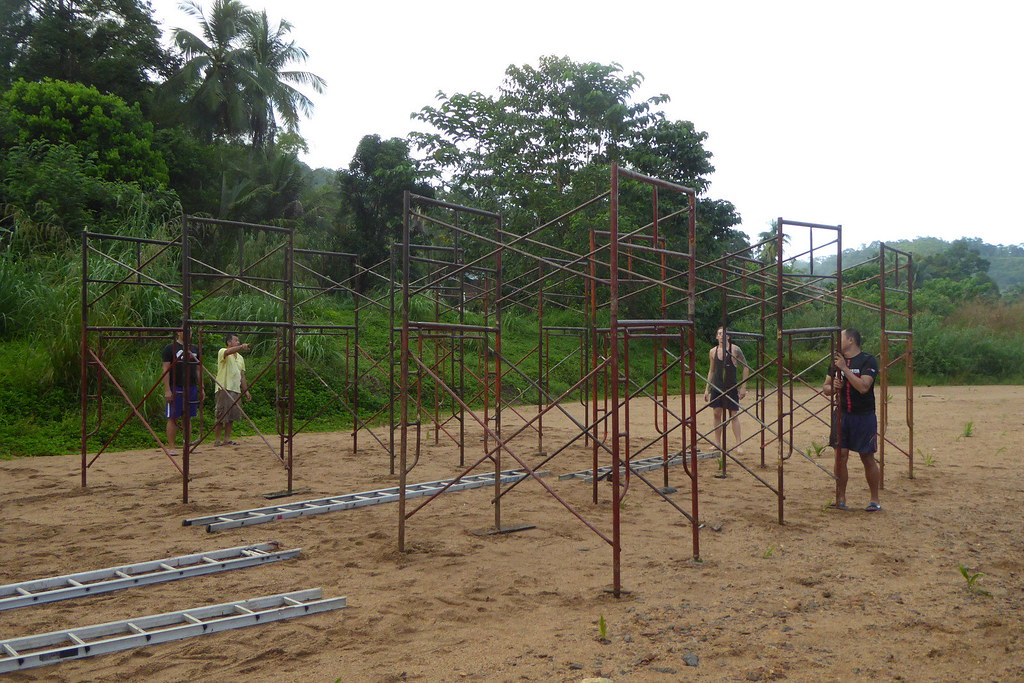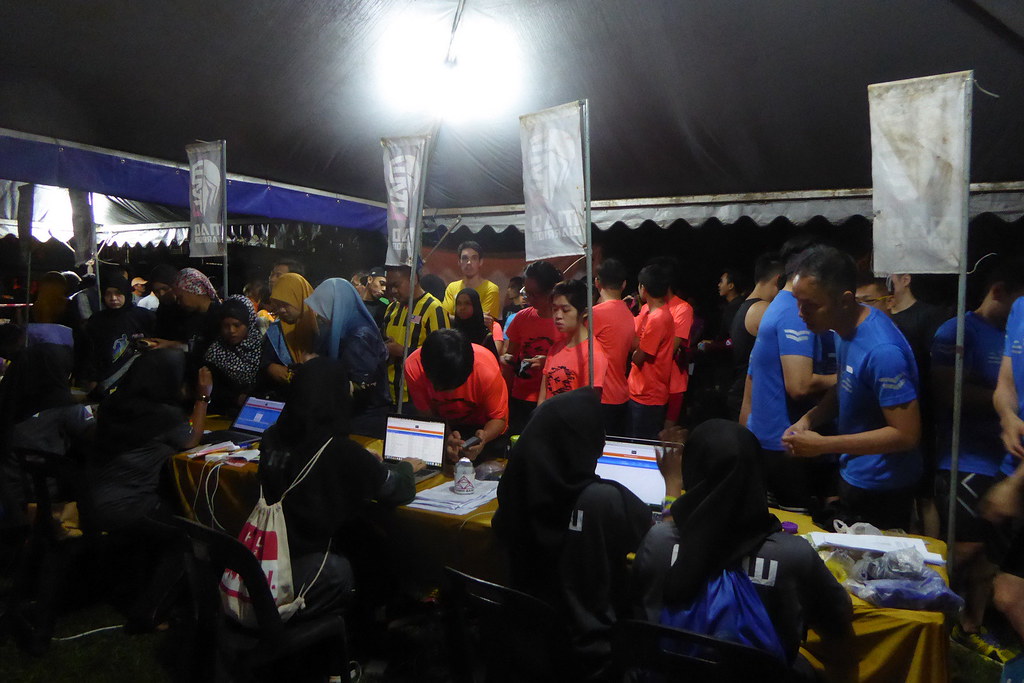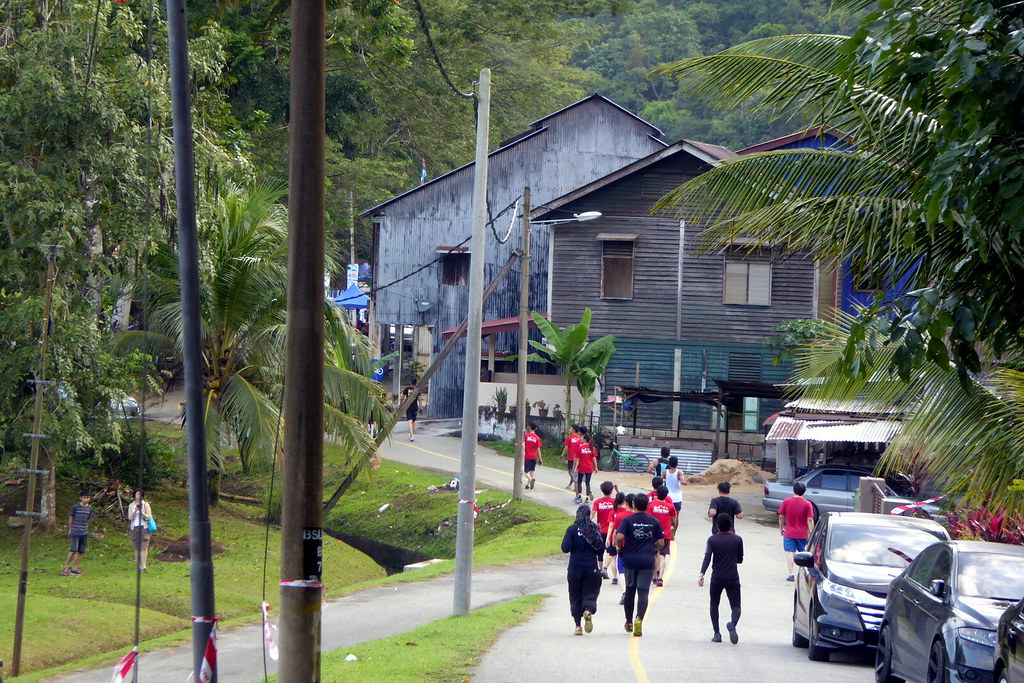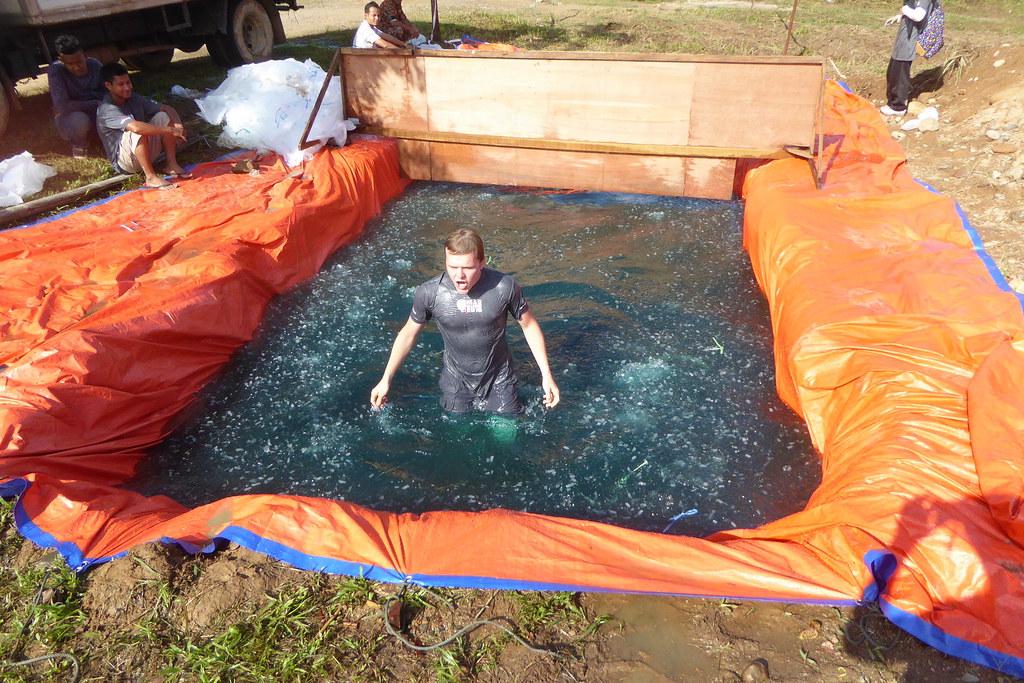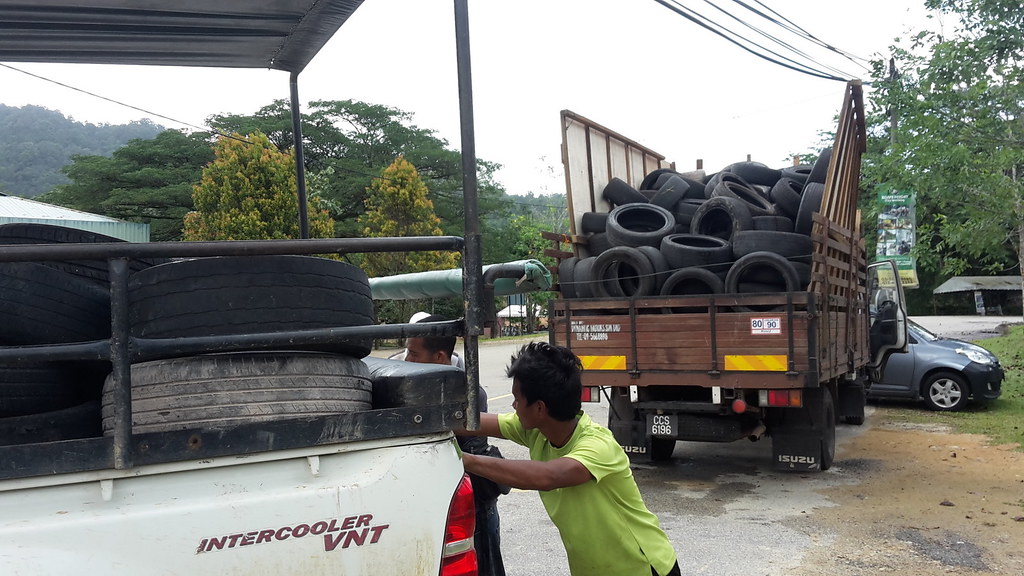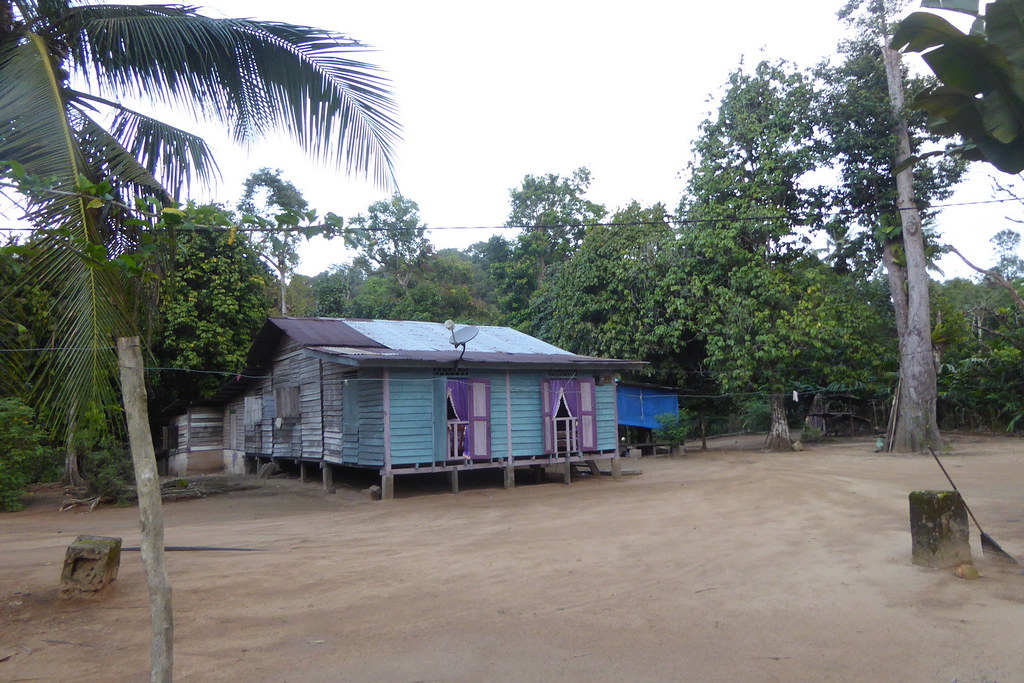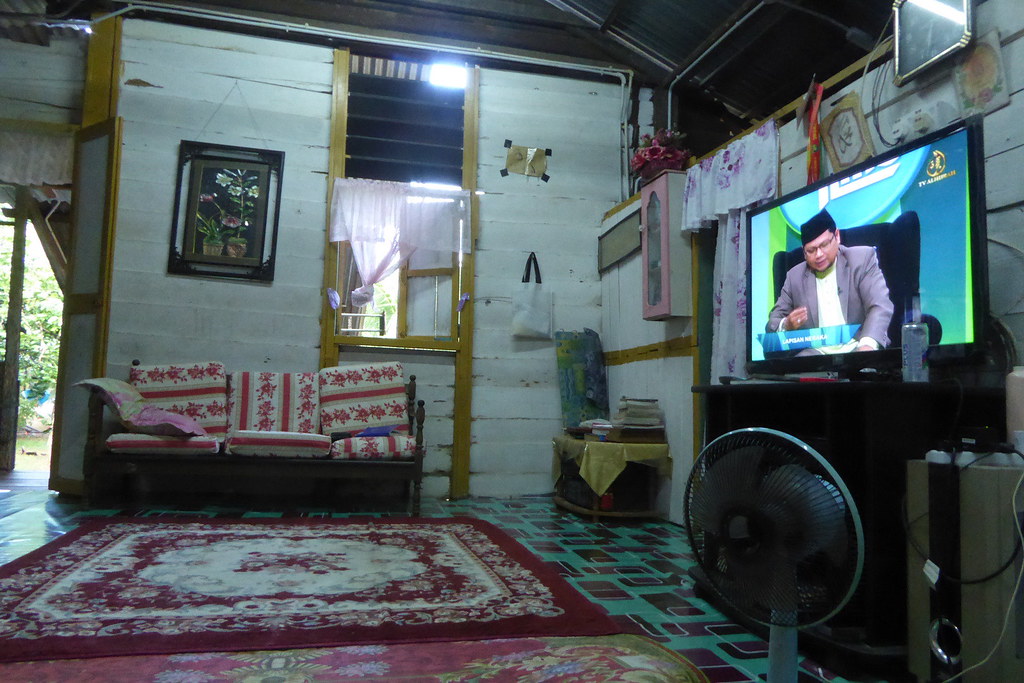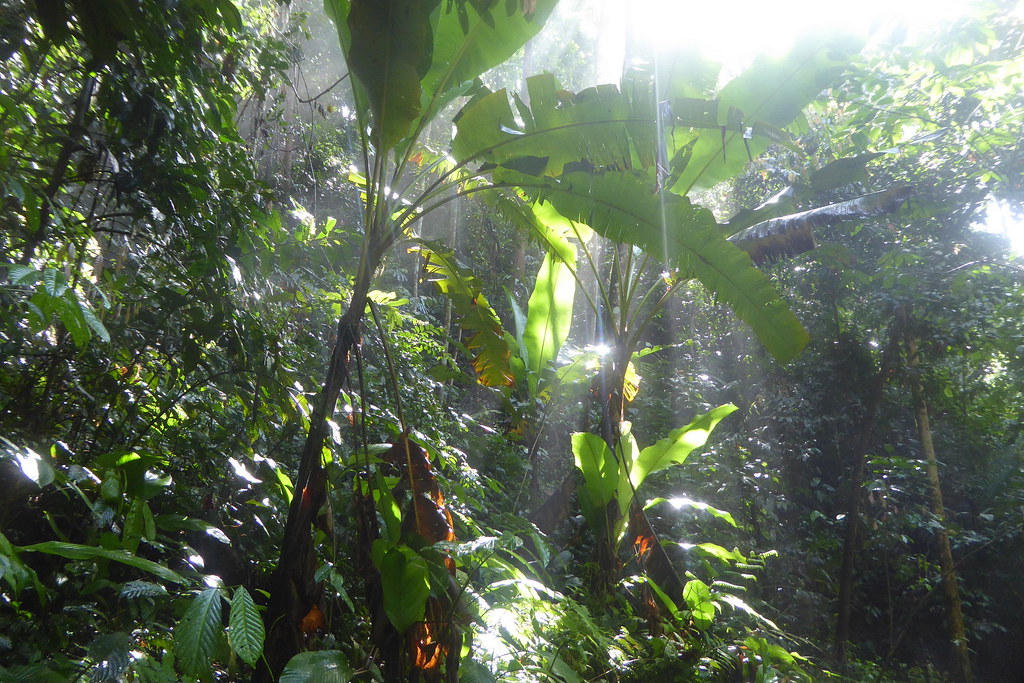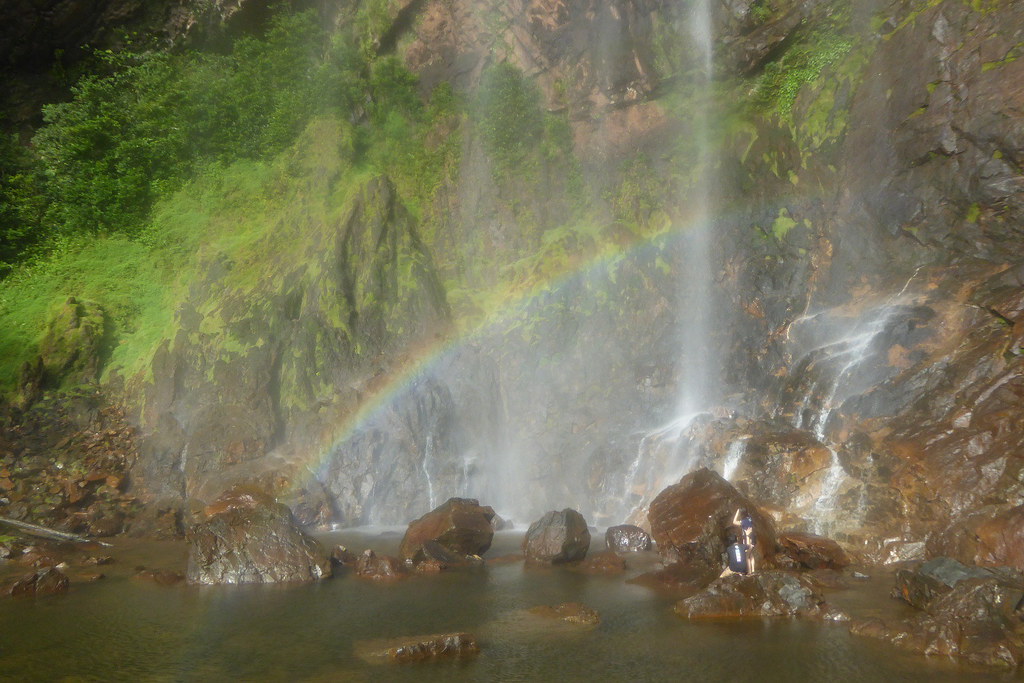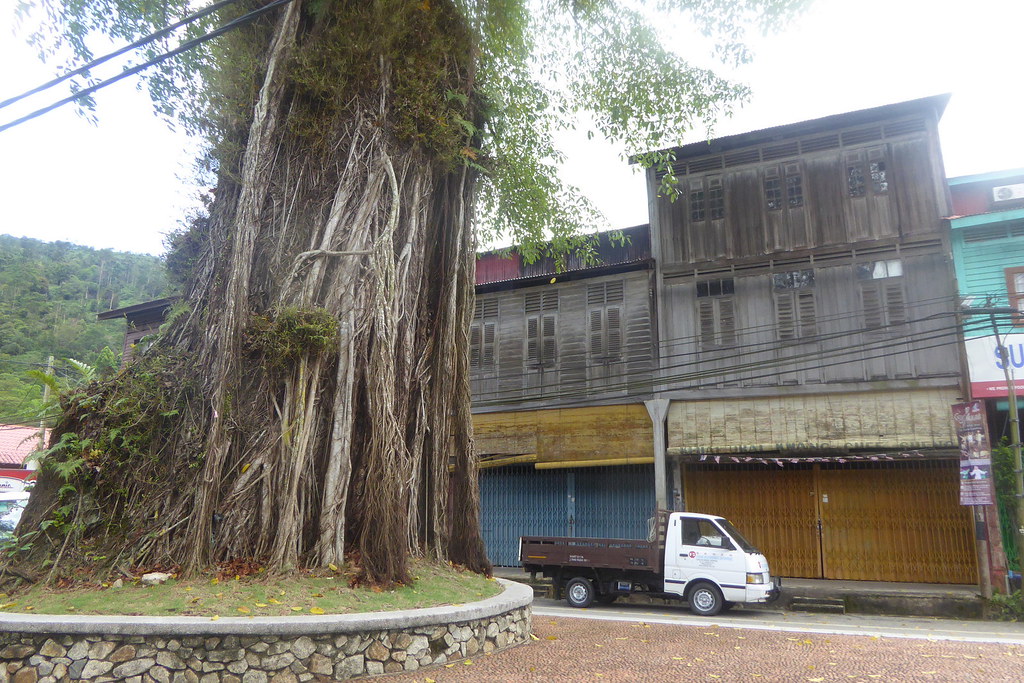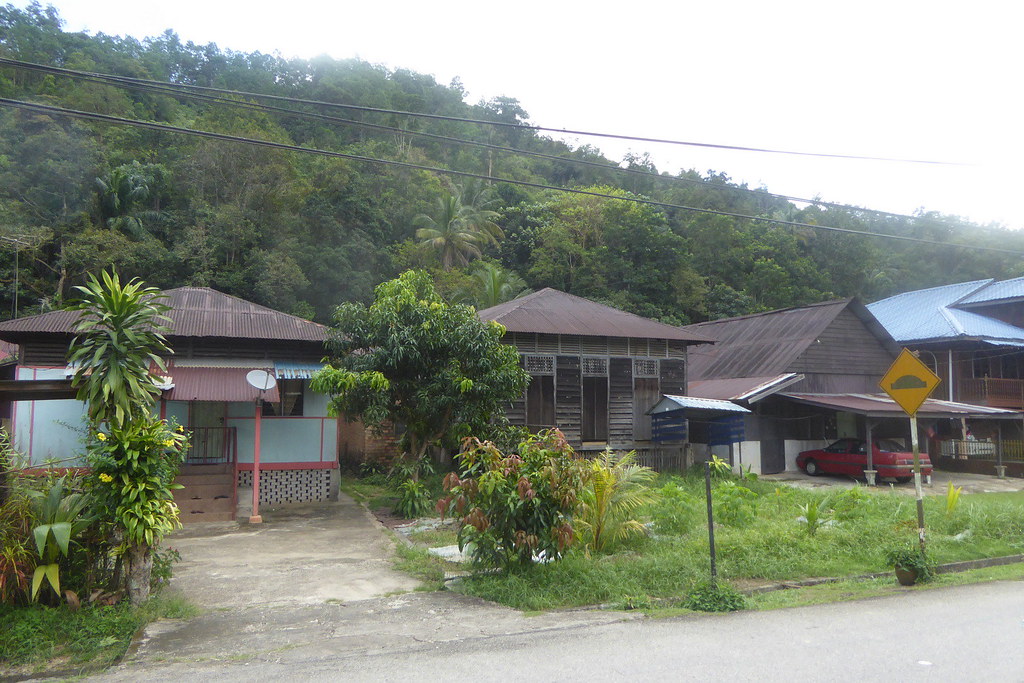Very spontaneously I decided to go to the small village of Sungai Lembing. I had gotten the chance to help out at an obstacle race. I met with the organizers two days before the race, and we all spent a great amount of time and effort to get everything ready in time. With one of the organizers and another volunteer I build several obstacles, the most difficult being a set of „monkey bars” that we created from scaffolding and ladders on a riverbank.
After I had seen and tried all of the 25 or so obstacles on the 14km long uphill trail through the forest I was more than eager to participate in the race. But unfortunately my leg injury (from cycling) did not heal in time, so it would not have been wise to attempt the challenge. Instead I got the task of “wave management”, to control who would start at a certain time. With almost 600 participants starting at the same time it would have gotten very crowded at the obstacles, so we sent them out in waves, evenly distributed over more than one hour.
When everyone was on their way we drove up to the finish line, where there were many more tasks to help out with. (The ice-water pool had to be filled, the sound system fixed, snacks prepared, and people needed their pictures taken…) Everyone was very appreciative, and I got to look behind the scenes of a professional running event, so even without running myself this turned out to be an amazing day!
While the organizers left the next morning I decided to stay for a few more days and I helped with dismantling the obstacles again.
I was invited by Faiz, the young manager of the Xcape adventure resort (one of the organizing parties of the event), to stay at his family’s home. So I got another unique experience of the Malay way of life; their food culture, and of course their generosity and immense hospitality.
Here I realized once again that I really had to learn the local language since there was very little common ground in communications with Faiz’ family, but also most of the other people I met in the village. In the cities of Malaysia, getting around only with English usually works fine: With many different ethnicities around, English has become something of an official language. But in the countryside, where the population is mostly Malay (or Chinese, like here in Sungai Lembing) and international tourists are a rarity the situation is very different. Interestingly enough chances are higher to find people of the older generations speaking some English – due to Malaysia’s history under British rule…
The last two days of my stay in the area I spent at the resort, helping and hanging out with the Indonesian workers, going hiking to a waterfall in the jungle, and camping at the riverside. After one week in Sungai Lembing my leg had recovered sufficiently and I decided to cycle on, although that meant leaving a wonderful place with even more wonderful people…
Sungai Lembing is a sleepy little village in the rainforest, about 40km north-west of Kuantan, in the east of peninsular Malaysia. It quickly becomes clear that it has been built by the British though, with the street layout being planned in advance and all the buildings built in a colonial style; sheet metal roofs on old wooden walls. One could feel that this peaceful place had lived past its prime, but had settled in a stable, pre-ghost-town state.
Before leaving I payed a visit to the local museum and learned that Sungai Lembing had once had one of the largest tin mines in the world. It had been called “Eldorado of the East” and was the wealthiest and most important town in the region, being home and workplace to ten times of today’s population. But with the mining industry gone, there is not much left, besides logging maybe, which explains the massive emigration from this otherwise beautiful and hospitable place. But it is starting to discover (local) tourism, so thing will probably be a lot different in a few years…
